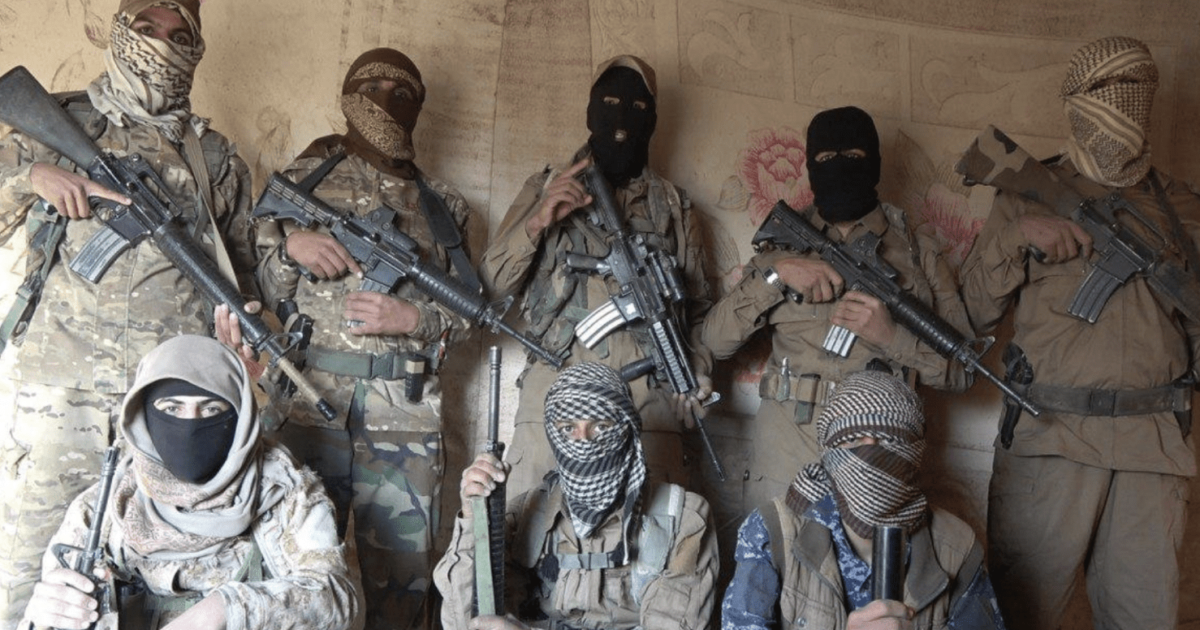ISIS-K: The New Variant

Court documents showed Kandic had multiple responsibilities, including recruiting foreign fighters (ISIS photo)
On January 4, the Islamic State of Iraq and Syria (ISIS) called for worldwide targeting of Jews and Christians, which it later claimed resulted in 610 people wounded or killed in 110 attacks across 12 countries.
Avril D. Haines, the Director of National Intelligence, told a Senate panel, “The threat from ISIS remains a significant counterterrorism concern,” while noting that the majority of its attacks have been carried out by “parts of ISIS that are outside of Afghanistan.”
The main body of ISIS is active in Turkey, Syria, and Iraq, but it is also absorbing other groups. In the Philippines, Abu Sayyaf has been the primary terrorist organization.
However, in 2014, a faction of Abu Sayyaf pledged allegiance to ISIS, and in 2016, a new branch was formed called ISIS-East Asia or ISEA-Philippines. ISIS also has affiliations with groups in West Africa, including factions of the Nigeria-based terrorist group Boko Haram.
An ISIS faction, the Islamic State of Khorasan Province (ISIS-K), has been rising in infamy and is believed to be responsible for the Moscow concert attack, as well as an attack in Iran that killed 100 people. Director Haines warns that ISIS-K may be ready to launch attacks in the U.S. and the West in as little as six months.
Established in 2015, ISIS-K comprises mainly fighters from Central Asia, along with members of the Tehrik-e Taliban Pakistan and the Islamic Movement of Uzbekistan.
Its prominence escalated into a global jihadist organization after the Taliban seized control of the Afghan government in 2021. Named after “the Khorasan” territory, encompassing Afghanistan, parts of Pakistan, Central Asia, and Iran, ISIS-K aims to establish a caliphate there. It receives funding from ISIS in Syria and anti-Taliban sources in Afghanistan.
The Taliban and ISIS-K are both Islamist groups, but they have significant ideological differences. ISIS-K follows a much stricter and more violent interpretation of Islam. They see the Taliban as insufficiently extreme and have clashed with them for control of territory and influence.
Both groups seek control of Afghanistan and its resources. ISIS-K considers the Taliban’s rule as illegitimate and aims to overthrow them. This competition for power prompts some Afghans to support ISIS-K in opposition to the Taliban.
Additionally, some former Taliban members, who either disagree with the group’s leadership or perceive them as not radical enough, join or support ISIS-K. The group also exploits local grievances against the Taliban, such as perceived corruption or heavy-handed rule, to garner support.
The Taliban has been fighting against ISIS-K in Afghanistan but has been unable to eradicate the group, which is also active in Pakistan and Iran. ISIS-K has been implicated in a number of thwarted terrorist plots in Europe. Members of ISIS-K networks have been arrested in Germany and the Netherlands.
ISIS-K claimed responsibility for an attack on a Roman Catholic Church in Istanbul, resulting in one fatality. The Turkey attack highlights the observations of some terrorism experts, indicating that ISIS-K has predominantly relied on inadequately trained individuals, with many of their attacks either failing or being thwarted.
However, the group is progressively gaining experience and augmenting its capabilities through the integration of other terrorist organizations. Conversely, if ISIS-K is indeed accountable for the Moscow and Iran attacks, it signifies them as one of the most lethal terrorist organizations currently active. Both of these attacks demonstrate a significant level of planning and competence.
ISIS-K’s recruitment strategies have proven notably successful, which is evident in its rapid growth. The group targets disenchanted Muslims across South and Central Asia, capitalizing on various local grievances such as poverty, government corruption, or ethnic tensions. These grievances are woven into a singular narrative, attributing blame to external forces or weak local governments while positioning ISIS-K as the sole solution.
They employ sophisticated online propaganda, often tailored to specific regions. ISIS-K emphasizes sectarian divisions, particularly targeting Shia Muslims, to stoke anger and fuel their narrative of oppression against Muslims.
This propaganda utilizes social media and messaging apps to disseminate their message and glorify violence. They also distribute publications in local languages to reach those who may not be active online. The group provides a sense of belonging and purpose to the marginalized or isolated. They exploit feelings of hopelessness and promise an opportunity to combat perceived injustices.
ISIS-K detests Jews, Christians, Shia Muslims, Iranians, and even terrorist organizations that it deems not extreme enough, like the Taliban. Essentially, if you exist and are not a member, ISIS-K hates you and wants to kill you. With wars in Ukraine and Gaza, and looming threats from Iran, China, and Russia, the resurgence of Islamic extremist terrorism and ISIS-K presents yet another threat for America to deal with.
The post ISIS-K: The New Variant appeared first on The Gateway Pundit.
Welcome to Billionaire Club Co LLC, your gateway to a brand-new social media experience! Sign up today and dive into over 10,000 fresh daily articles and videos curated just for your enjoyment. Enjoy the ad free experience, unlimited content interactions, and get that coveted blue check verification—all for just $1 a month!
Account Frozen
Your account is frozen. You can still view content but cannot interact with it.
Please go to your settings to update your account status.
Open Profile Settings